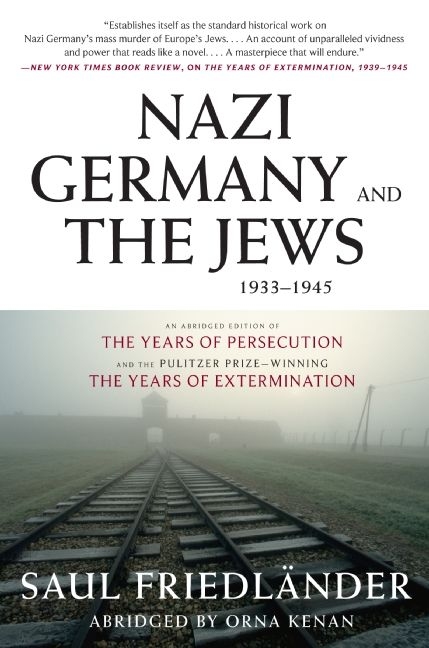| Title: | Nazi Germany and the Jews, 1933-1945 |
| Writer: | Friedländer, S. |
| Published: | Harper Perennial |
| Published in: | 2009 |
| Pages: | 512 |
| Language: | English |
| ISBN: | 9780061350276 |
| Omschrijving: | Two of the most magisterial books about the Holocaust are Nazi Germany and the Jews by Saul Friedländer and The Destruction of the European Jews by Raul Hilberg. Both books describe the complete history of this tragedy, but from different perspectives. Hilberg focuses mainly on the perpetrators and tries to explain how they came to this enormous crime. Friedländer, on the other hand, focuses less on the organizational side and looks at the whole from a broader, more human perspective. It is not only the perpetrators who play a role in this, but also especially the victims and bystanders. Originally published separately in two volumes, this abridged edition of Friedländer's book combines them into one volume consisting of of three parts: "Persecution" (January 1933 - August 1939), "Terror" (September 1939 - December 1941), and "Shoah" (January 1942 - May 1945). In the first part, the term 'redemptive antisemitism', launched by Friedländer, is introduced. This form of antisemitism, he said, was embraced by the Nazis and went beyond the traditional racial, economic and religious antisemitism that was present in many European countries, including Germany, in both visible and latent forms during that time period. Redemptive antisemitism was all about the Jews being a great danger to the survival of Germany and the Aryan race. Jews had established themselves in German politics, German society, and even in the German bloodstream. From the inside, they would overwhelm Germany by surprise and 'destroy' it. This had to be fought against so that the Germans would be redeemed. Friedländer describes how this went until the start of the war without systematic physical extermination, but by gradually excluding Jews from society and by forcing their emigration. In his description, he often pays attention to the little oppositions the Nazis experienced from German intellectuals, clergymen and other citizens in the implementation of their policies. Although redemptive antisemitism was not commonplace, other forms of antisemitism were stubborn enough to ensure that there was no serious protest. The second part starts with the outbreak of the war, an important moment in the history of the Holocaust. From that moment on, there was gradually room for organised mass murder, but the image of the enemy was also worked out on a large scale. Hitler had repeatedly threatened that if the Jews were to throw Germany back into a world war, this would lead to the destruction of Judaism. When Germany was at war with both the Soviet Union and the United States, it was the fault of the Jews. According to Hitler, both capitalism and communism were instruments of Judaism, and he emphasized that Roosevelt and Stalin were both surrounded by a "Jewish clique". Friedländer elaborates on how the plan to exterminate all European Jews came about and how the Jews themselves experienced this calamity. To accomplish this, he uses diaries of people from the ghetto and people in hiding. The same eyewitnesses appear in every chapter so that we see how their lives went through the different phases of this history. This part also pays a lot of attention to the role of collaborating countries and parties. The persecution of Jews especially in the Netherlands and France is extensively treated by Friedländer. He also takes a close look at the attitudes of the Allies and the Vatican. The strength of this book is that Friedländer places the history of the Holocaust in a broad perspective, without falling into a dry list of facts. He prevents this by quoting frequently from ego documents of the victims, no matter how minor the historical role some of those people may have had. In this way he creates a multifaceted picture of this history, which is not only about analyses and facts, but also about the emotions of the people involved, the stories of 'ordinary' people. The result is a book that not only describes the Holocaust from within, but also makes the catastrophe more tangible. In doing so, Friedländer remains at some distance from the most sinister facts. The actual process of extermination plays only a minor role in his story. However, this does not diminish the enormous impact that Friedländer’s book will have on the reader. It is recommended for anyone with more than an average interest in the Holocaust. Don't be discouraged by the enormous size of the book or by its academic appearance, because, thanks to the engaging style of writing and the great variety of subjects, it is also easy to read for someone without an academic background. Read it not only if you want to get a nuanced picture of the history of the Holocaust, but also if you want to see the catastrophe from a human perspective. |
| Beoordeling: |      Excellent Excellent |
Information
- Translated by:
- Fernando Lynch
- Article by:
- Kevin Prenger
- Published on:
- 27-06-2019
- Last edit on:
- 30-06-2019
- Feedback?
- Send it!



